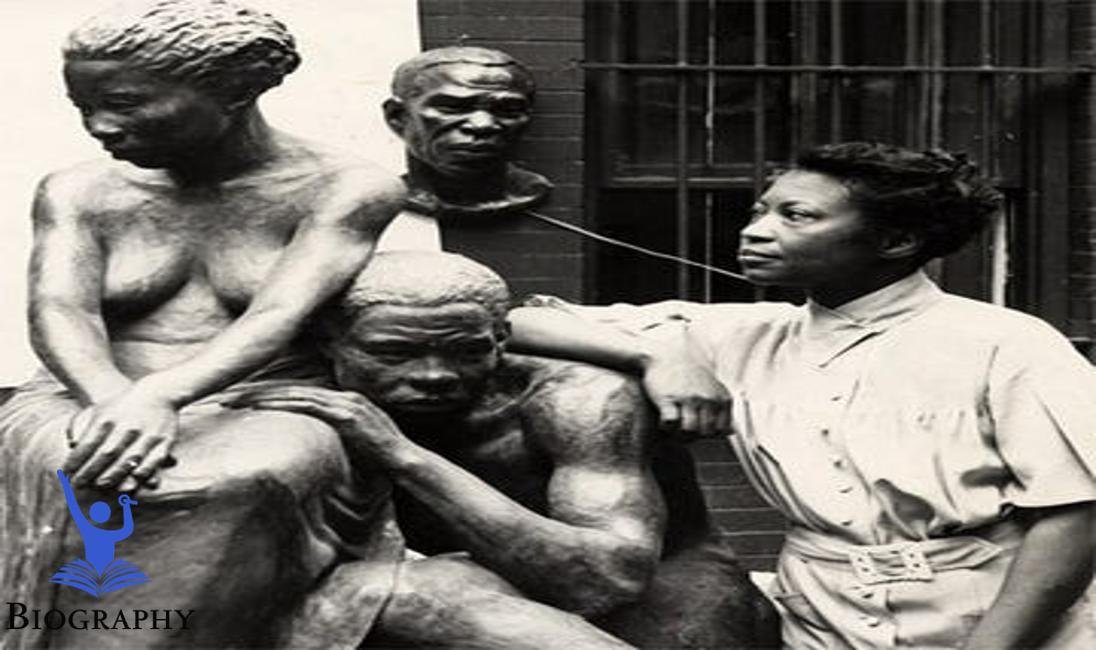Now Reading: Augusta Savage|Biography,African American Sculptor,Educator,family,fact & wiki
-
01
Augusta Savage|Biography,African American Sculptor,Educator,family,fact & wiki

Augusta Savage|Biography,African American Sculptor,Educator,family,fact & wiki
Augusta Savage: A Trailblazing Sculptor of the Harlem Renaissance
Quick Facts Table
| Attribute | Details |
|---|---|
| Age | (Born: February 29, 1892) |
| Weight | Not publicly disclosed |
| Height | Not publicly disclosed |
| Original Name | Augusta Christine Savage |
| Eye Color | Brown |
| Children’s Names | 1 (Herbert) |
| Birthdate | February 29, 1892 |
| Spouse | William H. H. Scott (m.1942-1944) |
| Home | New York City |
| Hometown | Green Cove Springs, Florida |
| Origin | American |
| Exes | None publicly specified |
| Brand Ambassador Roles | N/A |
Early Life and Family
On February 29, 1892, in Green Bay Springs, Florida, Augusta Savage was brought into the world. She was the seventh of fourteen girls in a large family. Augusta was raised by her mother, who supported her creativity from the beginning. Despite the hardships of need and racism, he showed an extraordinary ability to break through. Her first consolation came from her mother’s discovery of Augusta’s interest in her art. This sustainable climate helped his mind and prepared him for his future possibilities as a firefighter.
Early Career and Struggles
Augusta’s foray into the craft world began when she moved to New York to explore her ideas. His street, however, was nowhere near smooth. First, she faced financial hardship and prejudice because she was an African-American woman. Despite these misfortunes, he enrolled in the lengthy Cooper Association School of Craftsmanship. This was an important platform for her, as it allowed her to dress formally and open her eyes to the local craft.
During her search, Augusta fought to find her own identity and voice as a firefighter. Economic hardship forced him to take many unscheduled part-time jobs, which diverted his attention from making his chisel. By the time, for his main purposes of representing strength, he was improving his abilities, creating pieces that reflected his life’s legacy and personal conventions.
Rise to Stardom
Augusta Savage found outstanding recognition during the Harlem Renaissance, which was a social movement that ignored African American craft and calligraphy in the 1920s One of her biggest leaps was “Gamin,” the companion small portrait that was a portrait of African American youth This piece showcased her extraordinary skills as well as her ability to convey emotions with her face.
His work stands out among exhibitors and collectors, and he became a staple in the Harlem art scene. Similarly, Savage was a figure in the Harlem Artists Club, where he mingled with other infallible experts and playwrights of the day. This association helped him gain intellectual advantages and obtain public art commissions, which significantly enhanced his status.
Success
Augusta Savage‘s career rose to phenomenal heights. He received a prestigious award from the Julius Rosenwald Estate, which enabled him to travel to Paris to study at the Col des Beaux-Expressions. This open door was innovative, allowing him to be open to European art and new techniques that would influence his work.
Savage’s promises as an artist grew. He created several public art pieces, including a sculpture called “Lift Each Voice and Sing” at the 1939 New York World’s Fair. This account turned into a portrait of faith and a strong affirmation of the character of black America. His influence extended beyond his mainstream practice, as he turned into a passionate craft teacher, emphasizing the importance of social painting in human expression
Failure
Augusta Savage’s successes have also provided considerable challenges in her career. A major tragedy occurred when he completed a major project at the World’s Fair in 1939. However, he did not receive enough funding to fully realize his vision The lack of financial support led to an ongoing battle between various artists, especially women in recognition of his inheritance
In addition, Savage experienced scrutiny and dismissal from craft agencies, which sometimes excused his work as “too political” or inconsistent with conventional creative principles This predicament for n ‘disappointing, but it only assured that he could succeed and compliment other dark artists .
Television Career
Augusta Savage’s influence extended to coaching and mentoring, where she became a community initiator. Although he didn’t have a traditional TV career, his class and studio gave life to countless young craftsmen. Savage focused on giving marginalized networks a chance to engage with human expression, considering the importance of visualization in media and culture
Humanitarian Work
Throughout her life, Augusta Savage was deeply involved in philanthropic efforts focused on creating conditions for African Americans and has supported expressive training He thrived as a teacher and coach, using his opportunity to maintain a youthful dynamic in the Harlem crowd. Savage acknowledged that gesture could be researched and applied, and he energetically sought to keep doors open for everyone around him.
Additionally, he was involved in movements promoting social freedom and civil rights. Her commitment to social causes reflected her belief in the power of craft to affect change and inspire people in the future.
Personal Life and Controversies
In her personal life, Augusta Savage also had difficulties. However, she married William H.H. Scott briefly, and their marriage ended separately. As a single parent, she raised her son Herbert while exploring his career as a craftsman. The Savage relationship was isolated most of the time due to her status as a female craftsman in a male-dominated industry and the demanding responsibilities of parenthood
While Augusta Savage faced some controversy, especially over the political implications of her statue, she remained resolute in her convictions. It addresses the largely intractable problems of her race and identity, stimulating support and research from all walks of life.
Legacy / Awards
Augusta Savage’s legacy as a rock artist and pioneer of African American art remains prominent today. While he faced a variety of challenges, his impact on the craft world and his commitment to the Harlem Renaissance are significant He associates himself with his ability to capture the excellence of dark experience and its resilience through and his work.
Savage’s craft has been praised in various exhibitions, and his influence can be seen in the development of contemporary Dark scholars. He prepared people for the future by advocating painting in the visual medium. In recognition of his determination, his work has been exhibited in galleries and educational symposiums, assuring that his legacy will endure
Augusta Savage‘s life was an example of the resilience and innovation of African American artists. Through his battles and conquests he made a lasting impression on the craft universe, inspiring countless others to emulate and not be strong enough to become an optician and his story is one of patience, other things a production, craftsmanship and an unwavering commitment to community.








































